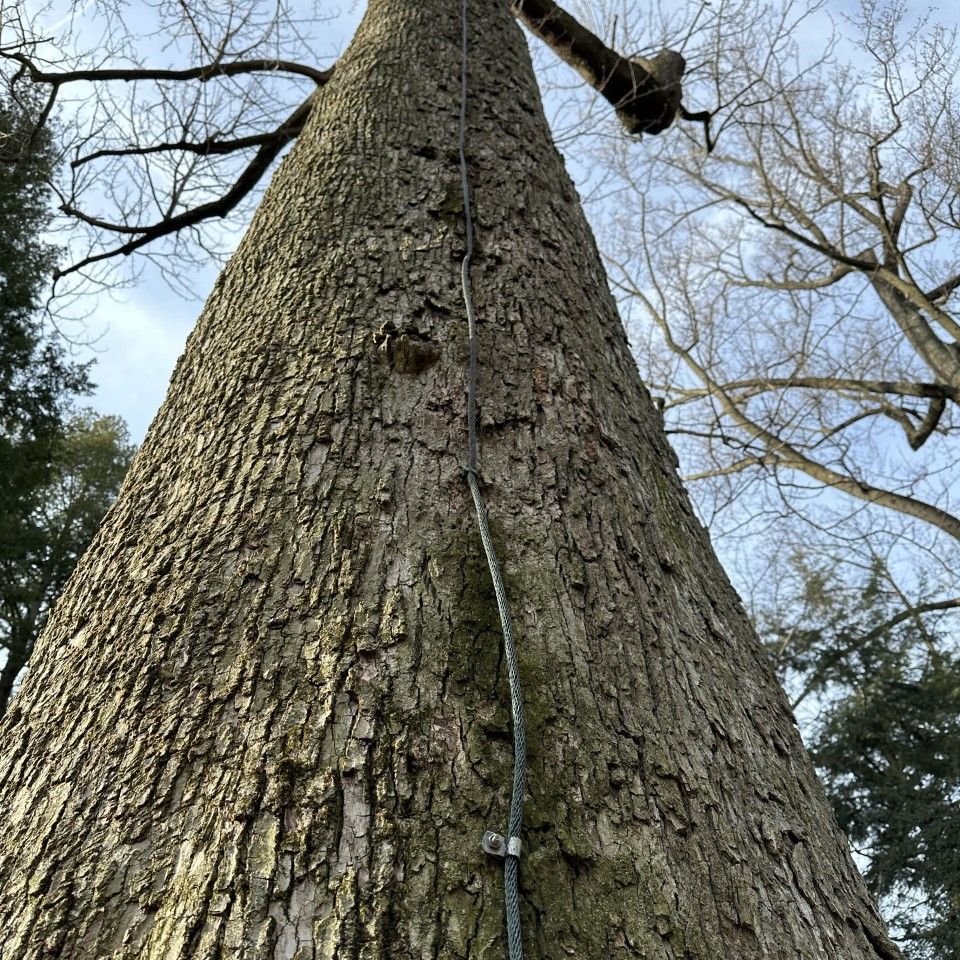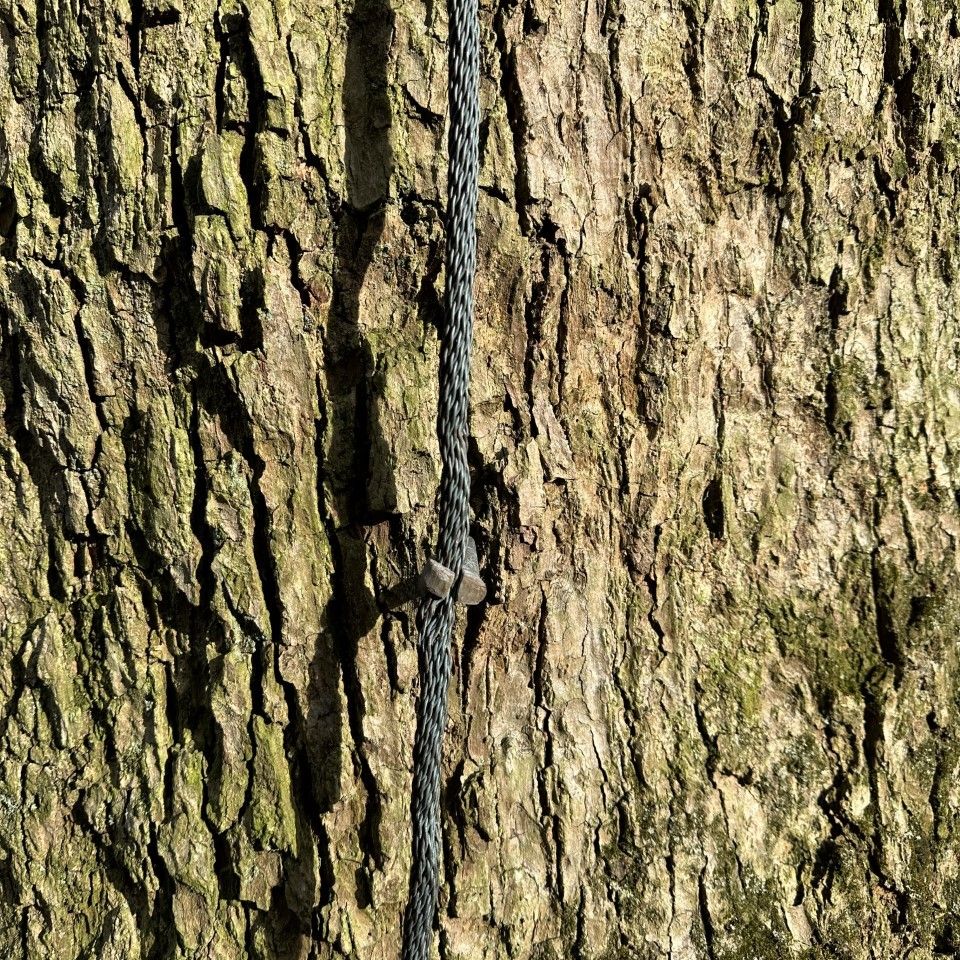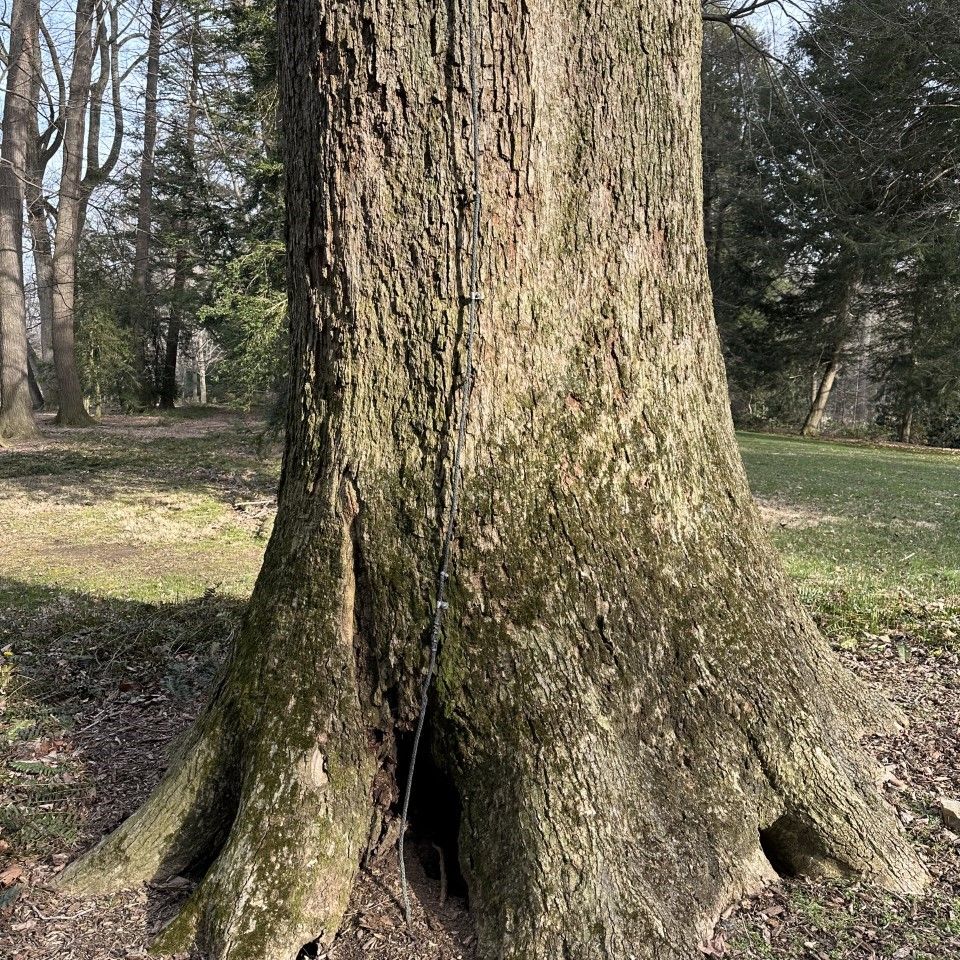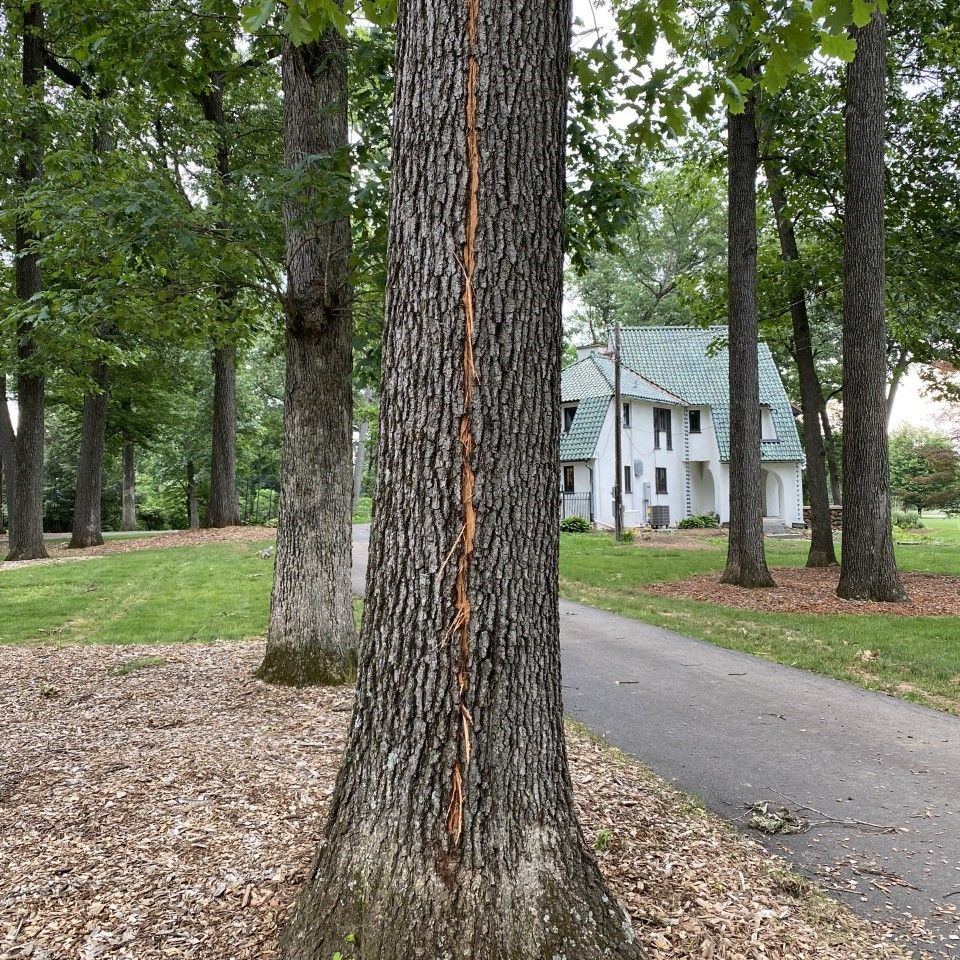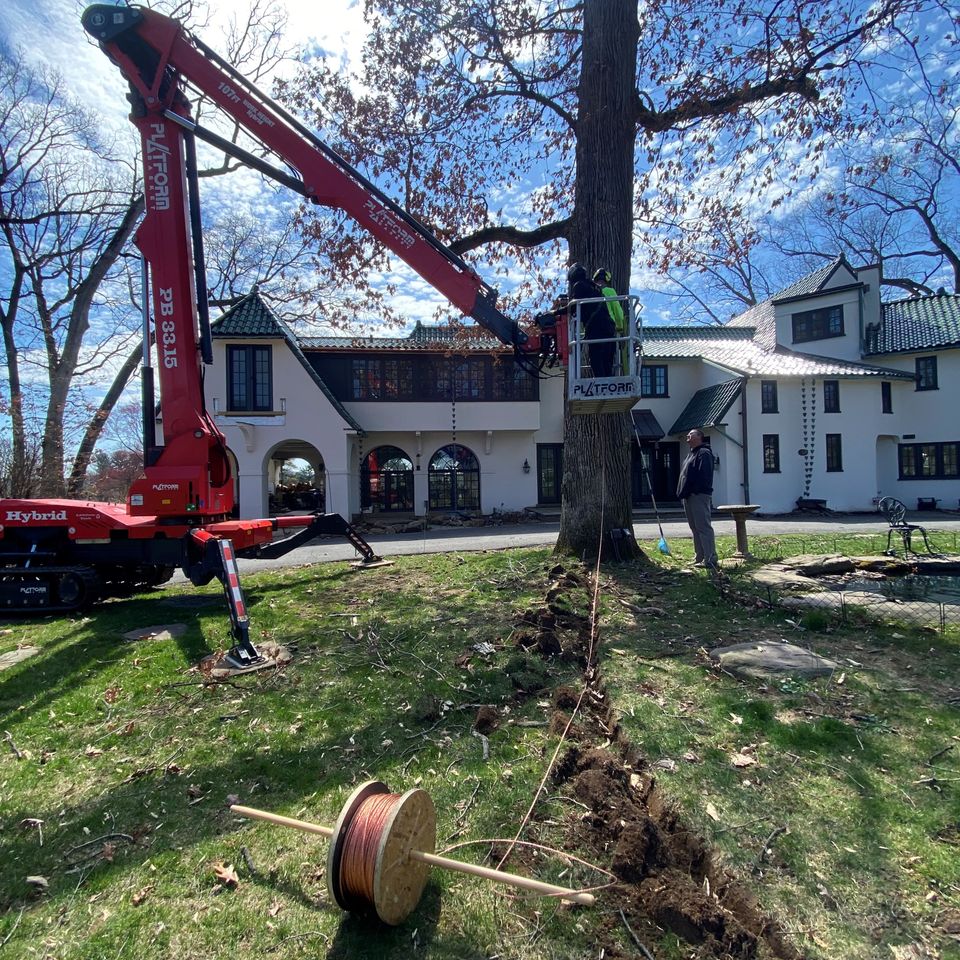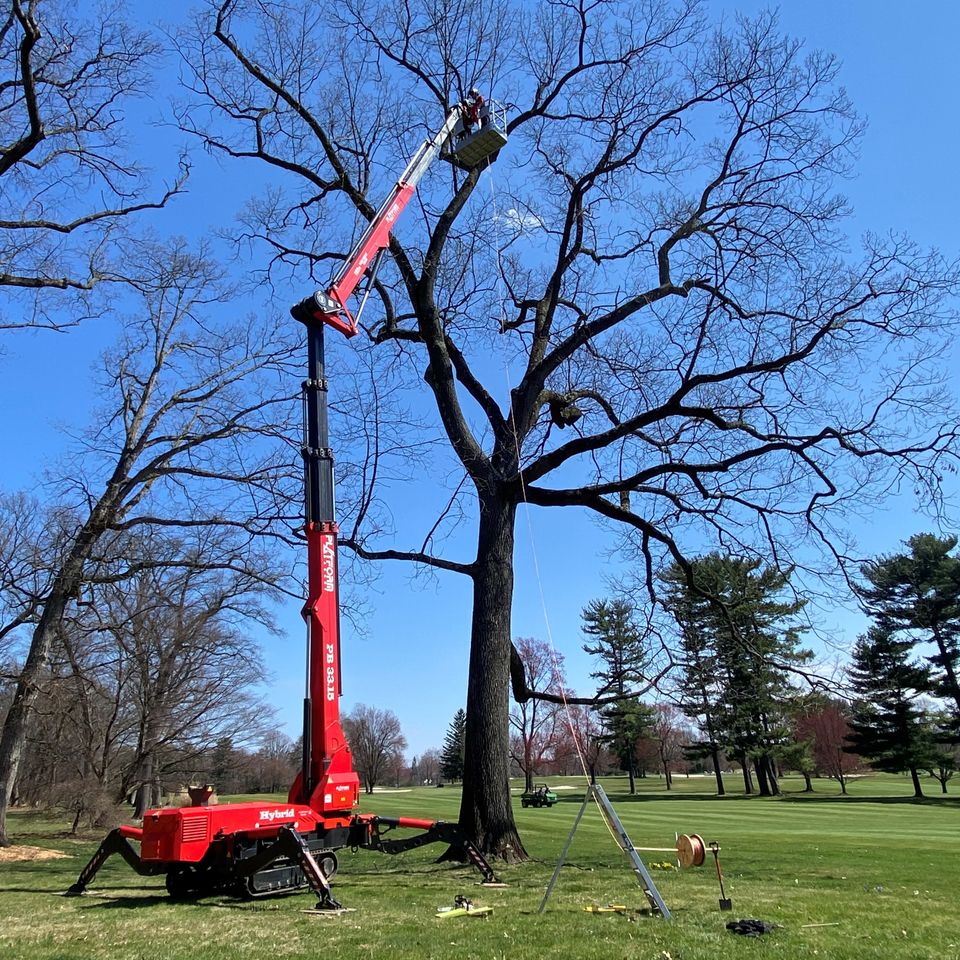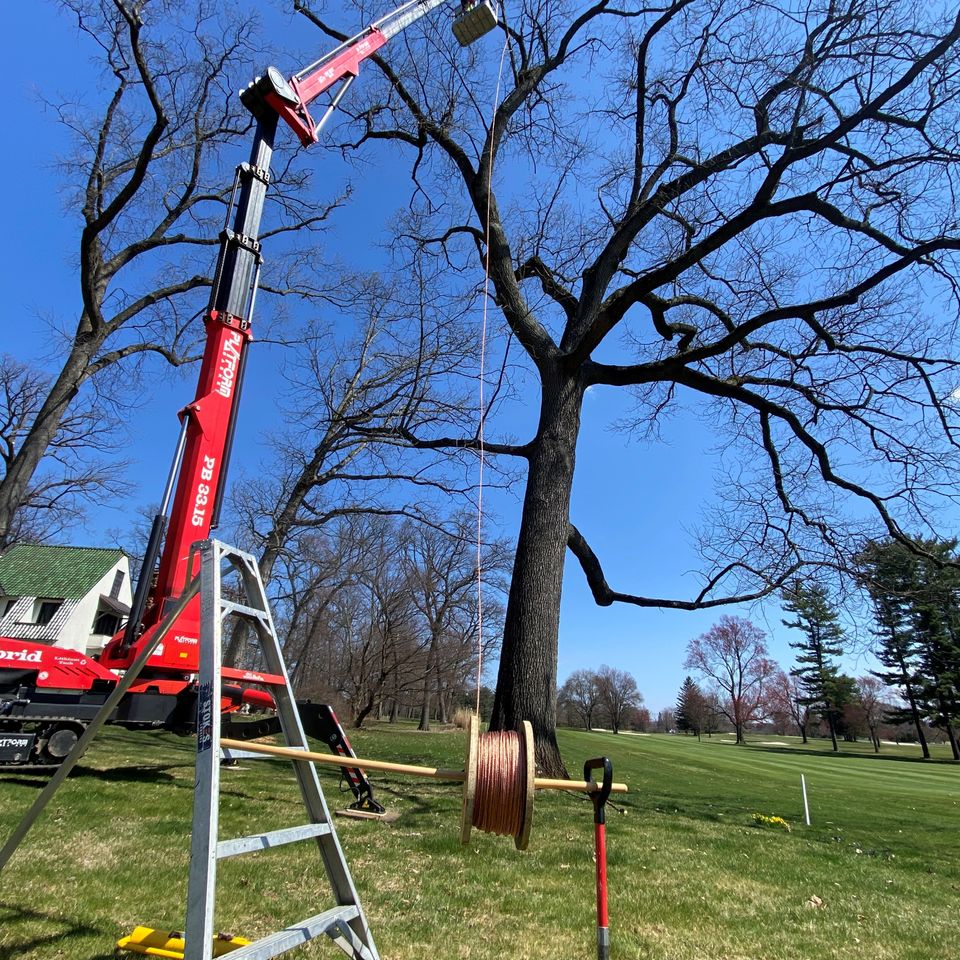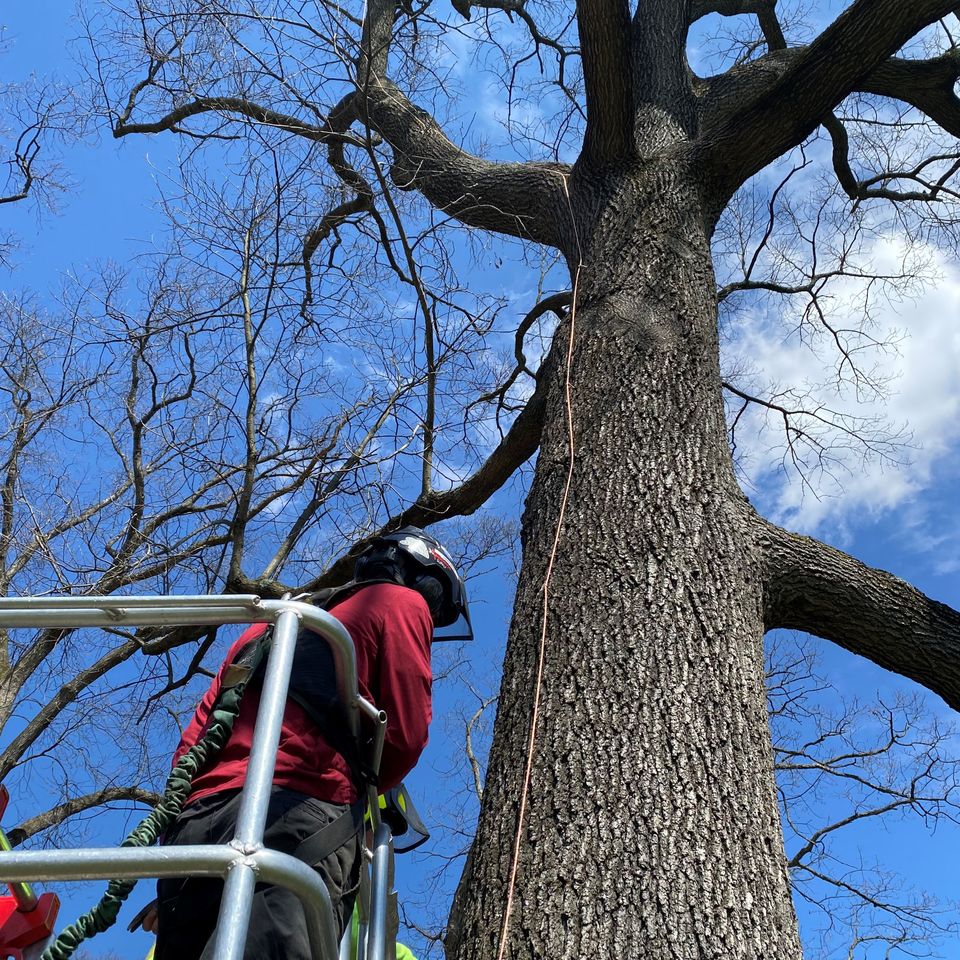Lightning Protection
Over one million trees are struck by lightning in the United States annually. Often a lightning strike will kill or damage a tree so severely that removal of the tree is warranted. Lightning protection systems can minimize the risk of damage from a lightning strike if the tree is hit.
Lightning protection systems consist of a series of copper conductors and wires that connect to a ground rod, to reduce the damage to the tree and to conduct the charge to the earth.
The tallest trees are usually most susceptible to a lightning strike, but also certain species are more prone such as tulip poplar, oak, pines, and maples.
Good candidates for a lightning protection system would be historic trees, those in featured locations of the landscape, and trees that are close to structures.
A lighting protection system should be inspected annually to insure they are intact. Systems will require maintenance to extend the conductors and replace fasteners to accommodate the growth of a tree.
Lightning protection systems consist of a series of copper conductors and wires that connect to a ground rod, to reduce the damage to the tree and to conduct the charge to the earth.
The tallest trees are usually most susceptible to a lightning strike, but also certain species are more prone such as tulip poplar, oak, pines, and maples.
Good candidates for a lightning protection system would be historic trees, those in featured locations of the landscape, and trees that are close to structures.
A lighting protection system should be inspected annually to insure they are intact. Systems will require maintenance to extend the conductors and replace fasteners to accommodate the growth of a tree.

